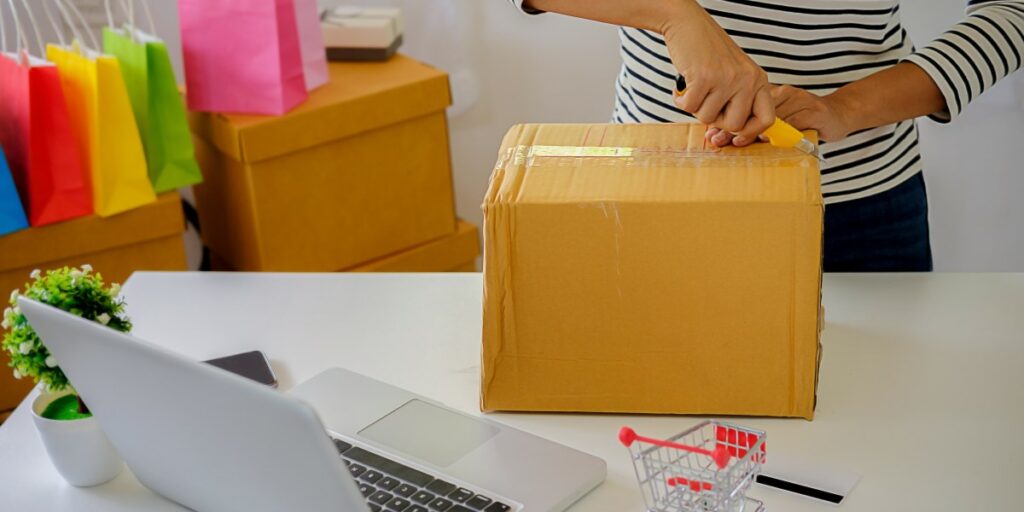Are you aware of the fact that 65% of a company’s business revenue originates from existing customers? In other words, do you know how great customer lifetime value benefits your business?
That’s an impressive number, right?
Do you want to achieve such a goal?
Then stay tuned! Because we will walk you through the reasons for customer lifetime value’s matter to your business, two typical ways to calculate this metric and some helpful methods to improve it.
Table of Contents
What is “customer lifetime value”?

Customer Lifetime Value or CLV for short is the total amount of money that a customer is predicted to contribute to your business’s revenue in their lifetime. In other words, this phrase shows how worth your customers are to your eCommerce business.
So a high CLV means loyal customers bringing a long-lasting and sustainable revenue for your business. It’s a useful indicator for assessing consumer satisfaction, loyalty, and brand viability.
Why customer lifetime value matters?
More than just a metric, it tells you what a future holds to your business.
To loyal customers, it doesn’t require much money in order to launch a marketing strategy with the aim of attracting them to purchase compared to the lead. Additionally, they can be considered supportive and close friends to your business, so providing that your business has a huge number of loyal customers, it will be money-saving while boosting revenue efficiently.
Let’s take a look at 5 outstanding reasons for customer lifetime value’s importance.
Boost customer loyalty
As its main core, customer lifetime value is about improving customer journey and evaluating their experience along the way.
Let’s guess what you can gain after that?
Well, you will increase customer loyalty.
Once you know where customers churn, you can bring a better experience to them. Customers once enjoy your product, they are likely to come back again and again. That demonstrates that CLV helps to boost fan loyalty.
Increase business profit

According to Signalmind, the sale’s probability from a new customer accounts for only 5 – 20% whereas the sale’s probability from an existing customer is between 60-70%.
From that statistic, we can realize why CLV is important to your business’s revenue. Actually, CLV can identify specific potential customers who contribute a huge amount to your business, which helps you serve existing customers with their interest and make them more content.
That motivates them to spend more money on your business. By retaining customers and building a business strategy that encourages them to spend more, you should see the benefit show up on your bottom line.
More effective marketing strategies
Now that CLV means understanding your customers based on the value they bring to your business, you can take advantage of CLV as a segmentation strategy.
Having that customers’ segmentation, you are able to identify the most and least profitable customers, personalize customers’ experience and maximize the use of your resources.
Thanks to that, your marketing department can define specific strategies relevant to specific customers, especially mid-level and low-level customers to turn them into long-term loyal ones.
For example, when you find out the pain point of the customers, you are capable of promoting products more effectively by focusing on how this product can help them solve their issue, instead of introducing it in general.
Determine customer acquisition costs
One of the wonderful points of CCL is that it gives you valuable insights into estimating the amount of money spent on acquiring new customers by informing you how much profit they might generate to your eCommerce business.
This can be of great help for you to allocate the right amount of money for acquiring different kinds of customers from low-level to high-value ones.
Sanity checks for sales forecasts
At its core value, CLV is not only a metric, but also a forward-looking concept.
It becomes simpler to do sanity tests for sales forecasts if you understand what customers are valuable to you over time. And if you can run sanity tests on sales forecasts, you’ll know whether or not your company is scalable.
In case you realize that your business isn’t scalable, you can start creating a new campaigns to target and win over the consumers who will help your company grow.
How to calculate customer lifetime value?
In fact, calculating customer lifetime value assists your business in seeing a defined metric prediction of the value that a customer’s association will have on their future relationship.
It can also help businesses identify their high-value customers and aid in guiding their marketing spend, contributing to your business’s marketing success.
Now that you have an overview of CLV, it’s time to figure out how to calculate this metric.
You can apply two easy effective ways measure customer lifetime value:
#1: Historical customer lifetime value
The total of all gross profit from a customer’s prior purchases is known as historical CLV. To figure it out, add up all of a customer’s gross profit values up to the last transaction (N).
Here is the formula:

Where
N = last transaction made by the customer at your store.
In principle, this method is handy if customers share identical preferences and interact in the same way together with your brand over roughly the same time.
#2: Predictive customer lifetime value
Predictive CLV aims to model your customers’ transactional behavior in order to anticipate what actions they will take in the future. It’s an excellent predictor of CLV, much better than historical CLV.
The predictive model uses algorithms to try to estimate a customer’s entire value while generating a certain CLV. It is based on a customer’s activity and a history of previous transactions.
Here’s the formula:

Where:
T = Average monthly transactions
AOV = Average order value
ALT = Average customer lifespan (in months)
AGM = Average gross margin
5 methods to improve customer lifetime value
Improve products’ quality
The first and foremost method to enhance customer lifetime value is to increase products’ quality.
Once customers have an enjoyable experience with your business product, they will have a good impression of your brand, which stimulates them to return in the future. Besides, high-quality products also determine why customers should make a purchase of your brand, not your competitors.
Therefore, try to make your products high-quality, one-of-a-kind as much as possible. Besides, we recommend that you should ask for and pay attention to feedback regularly in order to improve the quality timely.
Estimate customer satisfaction frequently
It’s crucial to measure customer satisfaction from time to time as it helps you take stock of that demand, find out what your customers like, and maybe even discover what they don’t like and what leads to dissatisfaction.
Better than any market study, a thorough grasp of your consumers’ contentment can assist you in identifying their individual demands. Furthermore, your company will be able to improve weak areas and reduce indirect expenses associated with customer dissatisfaction.
Recognize customer loyalty
As a basic human psychology, everyone wants to be recognized and valued, so another effective way to enhance CLV is rewarding customer loyalty who purchase or engage with a brand on a recurring basis.
To show how your company appreciates them and give them more reasons to choose and stay with your business, you can offer benefits involving free merchandise, rewards, coupons, or insider perks like early access to new products.

A company may dole out points or perks, and graduate customers to higher levels of loyalty the more they buy. These incentives and specific benefits often result in the customer becoming a more regular consumer or the ideal brand promoter.
One interesting fact is that the more unique the reward is, the more value they will bring to your business. Hence, exclusive content, gifts, etc will be extremely powerful to build a close-knit relationship with your customers.
Optimize Customer Service

improve your customer support can help boost customer LTV
What makes your customers stick to your business? Let’s imagine you provide a high-quality product to the customers but they experience long or bad responses. Will they return to your business one more time? Definite no!
Therefore, one of the key elements to keep your customers is good customer service. Every customer wants to be appreciated, to receive a timely response, support or solution when they need help with your products or services.
Customer service is the assistance you provide to your consumers before, during, and after they purchase and utilize your products or services. It includes guidance to use a product, a fast and explicit solution to deal with unexpected issues regarding the product, and good communication. Through round-the-clock customer support. It’s worth it.
Thus, if your business brings a positive purchasing experience to customers, it’s likely to create a long-lasting and sensational relationship with customers. Thanks to that, your business can improve customer lifetime value effectively and significantly.
That’s why so many companies take customer service into account in order to improve customer satisfaction, with the aim to turn them into loyal customers and raise their business awareness.
Personalize customer’s experience
Automation is an important element in providing products and services. However, customer experience’s personalization is a wonderful way to make you distinct from your competitors. In other words, it is a requirement to successfully close a deal.

After conducting customers’ segmentation, make sure you deliver your messages through the right channel at the right time and provide additional value to them.
For instance, to someone who’s fond of your clothes, don’t send them the same content as you send to bag lovers. Don’t bombard them with salesy messages.
Instead, try to create a bond with them by informing them of their interesting products’ discounts or promotions. That will definitely satisfy customers while boosting sales.
Conclusion
If you value customers, your business’s revenue will accelerate, your loyal customers will grow as well. It’s like a win-win. Therefore, customer lifetime value is of utmost importance for your business’s sake.
We hope that after reading this article, you gain deeper knowledge about customer lifetime value. Bear in mind that you should thoroughly understand your customers, your business and always catch up with trends to meet underlying demands of your customers and increase sales.
We will keep updating this article if we find more useful and informative information about customer lifetime value that benefits your business.
 socialhead
socialhead





